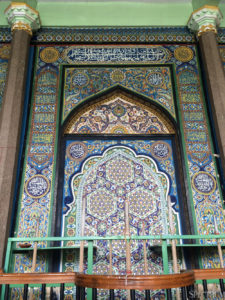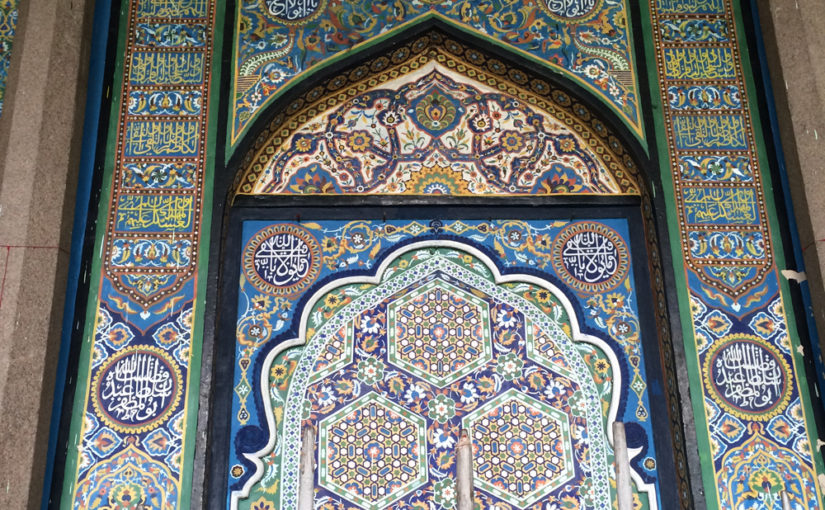Hyderabad is located in the Deccan Plateau of India, an area bordered by mountain ranges to the east and west and a river to the north. This is also the area of great Islamic influence; largely ruled over by the Mughal Empire, Qutub Shahi Kings and lastly a succession of seven Hyderabad Nizams.

India’s Islamic culture is not immediately considered when thinking of India, but even the great Taj Mahal was constructed by a Muslim ruler. Nowhere else is Islamic influence more clearly seen than in the Deccan.
Unfortunately, centuries old structures in Hyderabad have been encroached upon and weather has worn away intricate designs, a fact I did not realize until I went on a field trip for my Islamic Art and Architecture of Hyderabad class.
Our first stop was the Dargah of Hazrat Shah Khamosh, an impressive tomb of a Sufi Saint with the largest private collection of crystal bohemian chandeliers in the city. Even though this is a well-known dargah, it is still a victim of development within the original grounds.
The second destination was the Badshahi Ashur Khana. This structure was originally constructed by the founder of Hyderabad himself, Mohammed Quli Qutub Shah, in 1596 and was later added onto by Abdullah Qutub Shah.
The two major tragedies of this structure are the encroachments in and around the grounds with the subsequent dilapidation and the Iranian tile work.
After years of pleading with the government, the squatters were mostly evicted, however, the caretakers of this ashur khana have received no more of the promised assistance in restoration of the structures or grounds.
The entire interior of the ahsur khana was originally covered with ornately painted Iranian tiles with intricate phrases of the Quran and decorative floral designs. During a major flood of the city in the 1908, however, many of the tiles were damaged from the floodwaters and were badly in need of repair or replacement.
Unfortunately, although Iranian artisans were promised for proper restoration, none ever came. Because of this the designs were painted on the walls instead of being replaced as tile work once more. It’s still extremely beautiful, but I can’t help but think the original tile work would have increased the awe of the design work.
Apparently, this is not the only such case of dilapidation and encroachment in the city, and it was disheartening to see such beautiful places held in little regard by many. I hope this will soon change, otherwise I fear many of these hidden gems of Hyderabad’s architectural history and culture will fall into ruin and be lost forever.
